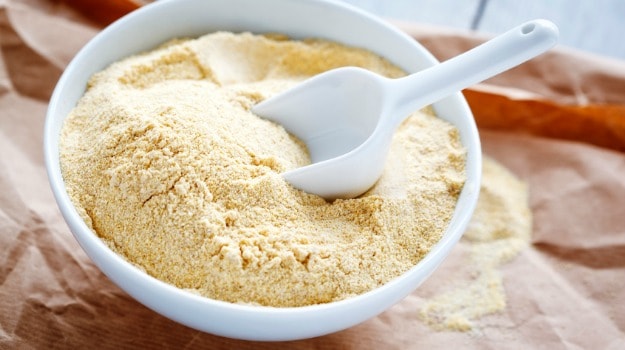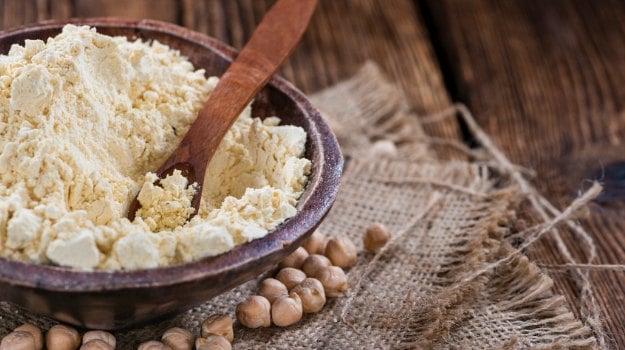Role of nitric oxide in the body
What is nitric oxide and how does it work?
Some people think it’s the gas that makes us laugh at the dentist office. Some think it’s the fuel racecar drivers use to speed up their cars. But it’s neither. Nitric oxide is a molecule that our body produces to help its 50 trillion cells communicate with each other by transmitting signals throughout the entire body.
There have been over 60,000 studies done on nitric oxide in the last 20 years and in 1998, The Nobel Prize for Medicine was given to three scientists that discovered the signaling role of nitric oxide.
Nitric oxide has been shown to be important in the following cellular activities:
• Help memory and behavior by transmitting information between nerve cells in the brain
• Assist the immune system at fighting off bacteria and defending against tumors
• Regulate blood pressure by dilating arteries
• Reduce inflammation
• Improve sleep quality
• Increase your recognition of sense (i.e. smell)
• Increase endurance and strength
• Assist in gastric motility
Nitric oxide and heart disease
Nitric oxide has gotten the most attention due to its cardiovascular benefits. Alfred Nobel, the founder of the Nobel Prize, was prescribed nitroglycerin over 100 years ago by his doctor to help with his heart problems. He was skeptical, knowing nitroglycerin was used in dynamite, but this chemical helped with his heart condition. Little did he know nitroglycerin acts by releasing nitric oxide which relaxes narrowed blood vessels, increasing oxygen and blood flow.
The interior surface (endothelium) of your arteries produce nitric oxide. When plaque builds up in your arteries, called atherosclerosis, you reduce your capacity to produce nitric oxide, which is why physicians prescribe nitroglycerin for heart and stroke patients.
Nitric oxide and erectile dysfunction
Viagra and other impotence medications work due to their action on the nitric oxide pathway. One cause of impotence is unhealthy and aged arteries that feed blood to the sexual organs. Viagra works by influencing enzymes in the nitric oxide pathway, causing a cascade of enzymatic reactions that enhance nitric oxide, causing more blood flow and better erections.
How to increase nitric oxide in your body
The most common way to increase nitric oxide is through exercise. When you run or lift weights, your muscles need more oxygen which is supplied by the blood. As the heart pumps with more pressure to supply the muscles with blood, the lining in your arteries releases nitric oxide into the blood, which relaxes and widens the vessel wall, allowing for more blood to pass though. As we age, our blood vessels and nitric oxide system become less efficient due to free radical damage, inactivity, and poor diet, causing our veins and arteries to deteriorate. Think of a fire hose as water rushes through it to put out a fire – it needs to expand enough to handle the pressure, still keeping enough force to put out the fire. Athletes and youth have the most optimal nitric oxide systems, reflecting their energy and resilience.
 Another way to increase nitric oxide is through diet, most notably by consuming the amino acids L-arginine and L-citrulline. Arginine, which can be found in nuts, fruits, meats and dairy, and directly creates nitric oxide and citrulline inside the cell (diagram 1).(6) Citrulline is then recycled back into arginine, making even more nitric oxide. Enzymes that convert arginine to citrulline, and citrulline to arginine need to function optimally for efficient nitric oxide production. We can protect those enzymes and nitric oxide by consuming healthy foods and antioxidants, like fruit, garlic, soy, vitamins C and E, Co-Q10, and alpha lipoic acid, allowing you to produce more nitric oxide. Nitric oxide only lasts a few seconds in the body, so the more antioxidant protection we provide, the more stable it will be and the longer it will last. Doctors are utilizing this science by coating stents (mesh tubes that prop open arteries after surgery) with drugs that produce nitric oxide.
Another way to increase nitric oxide is through diet, most notably by consuming the amino acids L-arginine and L-citrulline. Arginine, which can be found in nuts, fruits, meats and dairy, and directly creates nitric oxide and citrulline inside the cell (diagram 1).(6) Citrulline is then recycled back into arginine, making even more nitric oxide. Enzymes that convert arginine to citrulline, and citrulline to arginine need to function optimally for efficient nitric oxide production. We can protect those enzymes and nitric oxide by consuming healthy foods and antioxidants, like fruit, garlic, soy, vitamins C and E, Co-Q10, and alpha lipoic acid, allowing you to produce more nitric oxide. Nitric oxide only lasts a few seconds in the body, so the more antioxidant protection we provide, the more stable it will be and the longer it will last. Doctors are utilizing this science by coating stents (mesh tubes that prop open arteries after surgery) with drugs that produce nitric oxide.
Nitric oxide for athletes and bodybuilders
Increasing nitric oxide has become the new secret weapon for athletes and bodybuilders. Athletes are now taking supplements with L-arginine and L-citrulline to support the flow of blood and oxygen to the skeletal muscle. They also use them to facilitate the removal of exercise-induced lactic acid build-up which reduces fatigue and recovery time. Since arginine levels become depleted during exercise, the entire arginine-nitric oxide – citrulline loop can lose efficiency, causing less-than-ideal nitric oxide levels and higher lactate levels. Supplements can help restore this loop allowing for better workouts and faster recovery from workouts.
With nitric oxide deficiencies due to aging, inactivity, smoking, high cholesterol, fatty diets, and lack of healthy foods, increasing your nitric oxide levels can help increase your energy, vitality and overall wellness. The basic adage of eating well and staying active all makes sense now.
What is nitric oxide?
Nitric oxide is a colourless gas. It is also known as nitrogen monoxide and has the chemical formula NO.
Nitric oxide molecule is synthesized from molecular nitrogen and oxygen at very high temperatures of >10000C. This occurs naturally in the environment during lightning.
In the laboratory nitric oxide can be produced by reduction of nitric acid or nitrous acid. Nitric oxide has a melting point of -163.6°C (109.6 K) and a boiling point of -151.7°C (121.4 K).
Nitric oxide is called a free radical because it contains single unpaired electrons in its molecule. Hence it is reactive, and has a half-life of only a few seconds.
It is considered as an air pollutant responsible for the depletion of the ozone layer. Nitric oxide reacts with oxygen (O2) and ozone (O3) to form nitrogen dioxide (NO2), a brown fume and an environmental pollutant. Nitric oxide generated from automobile engines, industries and power plants is the cause of acid rain and smog.
However, this toxic environmental pollutant has also been shown to be a very important signalling molecule in the human body.
What is the role of nitric oxide in the body?
Some of the known functions of nitric oxide are listed in the table below.
| Cardiovascular system |
|
| Nervous system |
|
| Lungs |
|
| Gastrointestinal tract |
|
| Renal system |
|
| Immune system |
|
What is the role of nitric oxide in the skin?
Nitric oxide controls cutaneous microcirculation.
- It modulates the vasodilator response of the skin to local warming and ultraviolet-B (UVB).
- It mediates cutaneous oedema and inflammation.
- It is involved in skin pigmentation through ultraviolet induced melanogenesis.
- It may contribute to impaired barrier function.
- It promotes wound healing by cellular proliferation and angiogenesis.
Nitric oxide has shown antimicrobial properties against micro-organisms.
- Bacteria – Staphylococcus aureus
- Dermatophytes – Trichophyton rubrum, Trichophyton mentagrophytes
- Yeasts – Candida albicans
Nitric oxide also plays an important role in T-cell mediated diseases of the skin, and it has both pro and anti-apoptotic properties depending on its concentration, cell type and availability of other substrates.
How is nitric oxide produced in the human body?
Humans produce nitric oxide by several mechanisms.
- From the amino acid L-arginine by the enzyme nitric oxide synthase (NOS)
- From inorganic nitrates in green leafy vegetables, fruits, cereals and cured meat
Nitric oxide synthase has 3 isoforms:
- Neuronal NOS – nNOS or NOS I
- Endothelial NOS – eNOS or NOS III
- Inducible NOS – iNOS or NOS II
Neuronal NOS and endothelial NOS are constitutive enzymes. Their levels are relatively steady in the human body. They are found in endothelial cells, neurons, skeletal muscles, epithelial cells and many other tissues.
Inducible NOS is inducible and stimulated by specific cytokines. Most cells in the human body synthesize iNOS in response to inflammatory conditions.
How does the skin produce nitric oxide?
As all 3 isoforms of NOS are present either in the epidermal cells, dermal cells or both, skin can produce nitric oxide by an enzyme dependent mechanism.
Human skin is capable of releasing nitric oxide in an enzyme independent manner. This is due to photolysis of nitric oxide stores by UVA.
Nitric oxide is also produced by reduction of sweat nitrate by skin commensal bacteria, in particular Staphylococci.
How is nitric oxide stored in the human body?
Nitric oxide does not usually exist as nitric oxide in the body due to its unstable nature but reacts with other molecules to form more stable products.
- In the blood, nitric oxide has a very short half-life and rapidly oxidizes to nitrite. It is then further oxidized with oxyhaemoglobin to produce nitrate. Nitric oxide also reacts directly with oxyhaemoglobin to give rise to methhaemoglobin and nitrate.
- Reactions with cysteine residues in proteins lead to formation of nitrosylated products. Because of its high affinity to sulfhydryl groups (thiols), S-nitrosothiols (RSNOs) are the most common nitrosylated product in plasma.
Nitrate is the main storage form of nitric oxide. It is very stable when compared with other storage forms like nitrites and RSNOs, but these are important carriers and donor molecules of nitric oxide.
How can you test for nitric acid?
There are no tests for nitric acid, as it is too unstable. Instead, nitrates, nitrites and nitrosylated compounds may be measured using the following tests.
- Griess assay
- Saville assay
- Electron paramagnetic resonance (EPR) spectroscopy
- Chemiluminescence method
Nitric oxide deficiency
Deficiency of nitric oxide is suspected to have a role in several disorders.
- Essential hypertension (high blood pressure)
- Congenital abnormalities, including achalasia cardia, hypertrophic pyloric stenosis, and Hirschsprung disease
- Chronic kidney disease
In the skin, insufficient nitric oxide may result in psoriasis by promoting cell proliferation and reducing differentiation of skin cells.
- Reduced eNOS levels in the endothelial cells that line the blood vessels in the skin is believed to contribute to systemic sclerosis and morphoea (localised scleroderma).
Excessive nitric oxide
Consuming food rich in nitrates and nitrites increases the level of nitric acid and its storage form. Just as deficiency of nitric oxide can lead to disease, too much can also cause disease.
Nitric oxide is released from the cerebral vasculature, brain tissue and nerve endings.
- It may cause headache in migraine.
- It may damage brain cells leading to neurodegenerative diseases like Parkinson disease, Alzheimer disease, Huntington disease and amyotrophic lateral sclerosis.
Nitric oxide produced by β cells in the pancreas may damage the cells (apoptosis) causing type 1 diabetes.
In the skin, ultraviolet irradiation may lead to excessive nitric oxide production by enzyme dependent and independent mechanisms.



